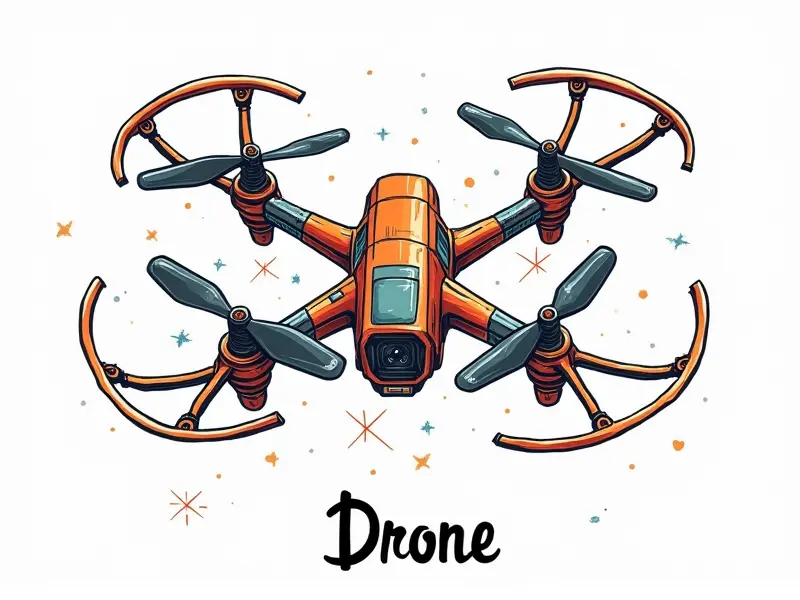Do all drones have autopilots?

Do All Drones Have Autopilot Capabilities?
The world of drones is rapidly evolving, with advancements in technology making unmanned aerial vehicles (UAVs) more accessible and versatile than ever before. One common question that arises when discussing drones is whether all models come equipped with autopilot capabilities. The answer to this isn't straightforward and depends on several factors.
Are Autopilots Standard in RC Drones?
Radio-controlled (RC) drones, often used for hobbyists and enthusiasts, do not typically feature built-in autopilot systems. These devices are designed primarily for manual control through a remote controller, allowing users to maneuver the drone with precision and agility.
However, some high-end RC models may offer optional add-ons or software that can mimic basic autopilot functions such as waypoint navigation or automatic return-to-home features, but these are not standard across all RC drones.
Is Autopilot Essential for Drones?
The necessity of an autopilot system in a drone largely depends on its intended use. For professional applications like aerial photography, surveying, and precision agriculture, an autopilot system is crucial as it enables the drone to perform complex tasks with minimal human intervention.
Autopilots can automate flight patterns, maintain altitude stability, and even execute autonomous missions, which are critical for achieving high-quality results in these fields.
Every Drone Equipped with Autopilot?
No, not every drone comes equipped with an autopilot system. The presence of such technology depends on the drone's purpose and price range. Entry-level consumer drones often lack advanced autopilot features to keep costs low, while professional-grade models typically include sophisticated autopilot capabilities.
Autopilots are generally more common in commercial drones used for industries like real estate photography, construction site monitoring, and environmental research due to their need for precise and consistent performance.
The Truth About Drone Autopilots
Understanding the truth about drone autopilots involves recognizing that these systems vary widely in complexity and functionality. Basic autopilot features might include simple altitude hold or GPS-based navigation, while advanced systems can handle complex missions like multi-point route planning and obstacle avoidance.
The availability of such technology is largely dictated by market demand and technological advancement within specific drone niches.
Why Not All Drones Feature Autopilot
- Cost Considerations: Implementing autopilot systems can significantly increase the cost of a drone, making it less accessible to casual users who prioritize affordability over advanced features.
- Target Audience: Casual hobbyists and beginner pilots often prefer drones that are easy to control manually without the complexity of an autopilot system.
- Regulatory Compliance: In some regions, certain autopilot functionalities may be restricted by regulations aimed at ensuring public safety and privacy.
Understanding Drone Autopilot Technology
To comprehend drone autopilot technology better, it's essential to know that these systems rely on various components like GPS modules, inertial measurement units (IMUs), and flight control algorithms. These elements work in tandem to enable the drone to navigate autonomously, maintain stability, and execute predefined missions.
Advanced autopilots can also integrate with external devices such as cameras or sensors for enhanced data collection and analysis.
Are Autopilots a Must-Have for Drones?
Determining whether an autopilot is essential depends on the drone's intended use. For professional applications requiring high precision and reliability, an autopilot system is indispensable. However, for recreational purposes or casual photography, manual control might suffice.
Ultimately, the decision hinges on balancing functionality requirements with budget constraints.
Do Consumer Drones Include Autopilot?
The inclusion of autopilot features in consumer drones varies widely depending on the brand and model. While some high-end consumer drones offer basic autopilot capabilities like waypoint navigation or follow-me modes, many entry-level models do not include such advanced functionalities.
It's crucial for potential buyers to research specific drone models thoroughly before making a purchase decision based on their need for autopilot features.
Is Autopilot Common in RC Drones?
Autopilot is far from common in standard radio-controlled (RC) drones, as these devices are primarily designed for manual control and maneuverability. However, some high-end RC models may incorporate optional autopilot modules or software add-ons to enhance their utility.
The availability of such features typically depends on the drone's intended use case and the manufacturer's vision for its capabilities.
Exploring Autopilot Features in Drones
- Waypoint Navigation: Allows drones to fly predefined routes autonomously, ideal for mapping large areas or conducting repetitive inspections.
- Return-to-Home (RTH): Ensures the drone automatically returns to its starting point when battery levels are low or control signals are lost.
- Automatic Obstacle Avoidance: Uses sensors and advanced algorithms to detect obstacles and adjust flight paths accordingly, enhancing safety during missions.
- Mission Planning Software: Enables users to program complex missions with multiple waypoints and actions, useful for industries like agriculture and construction.
Conclusion
In summary, not all drones come equipped with autopilot capabilities. The presence of such technology depends on the drone's purpose, price range, and target audience. While professional-grade drones often feature advanced autopilots to enhance performance and reliability, consumer models may lack these features to maintain affordability.
Understanding the nuances between different types of drones and their respective autopilot functionalities is crucial for making informed purchasing decisions based on specific needs and use cases.

